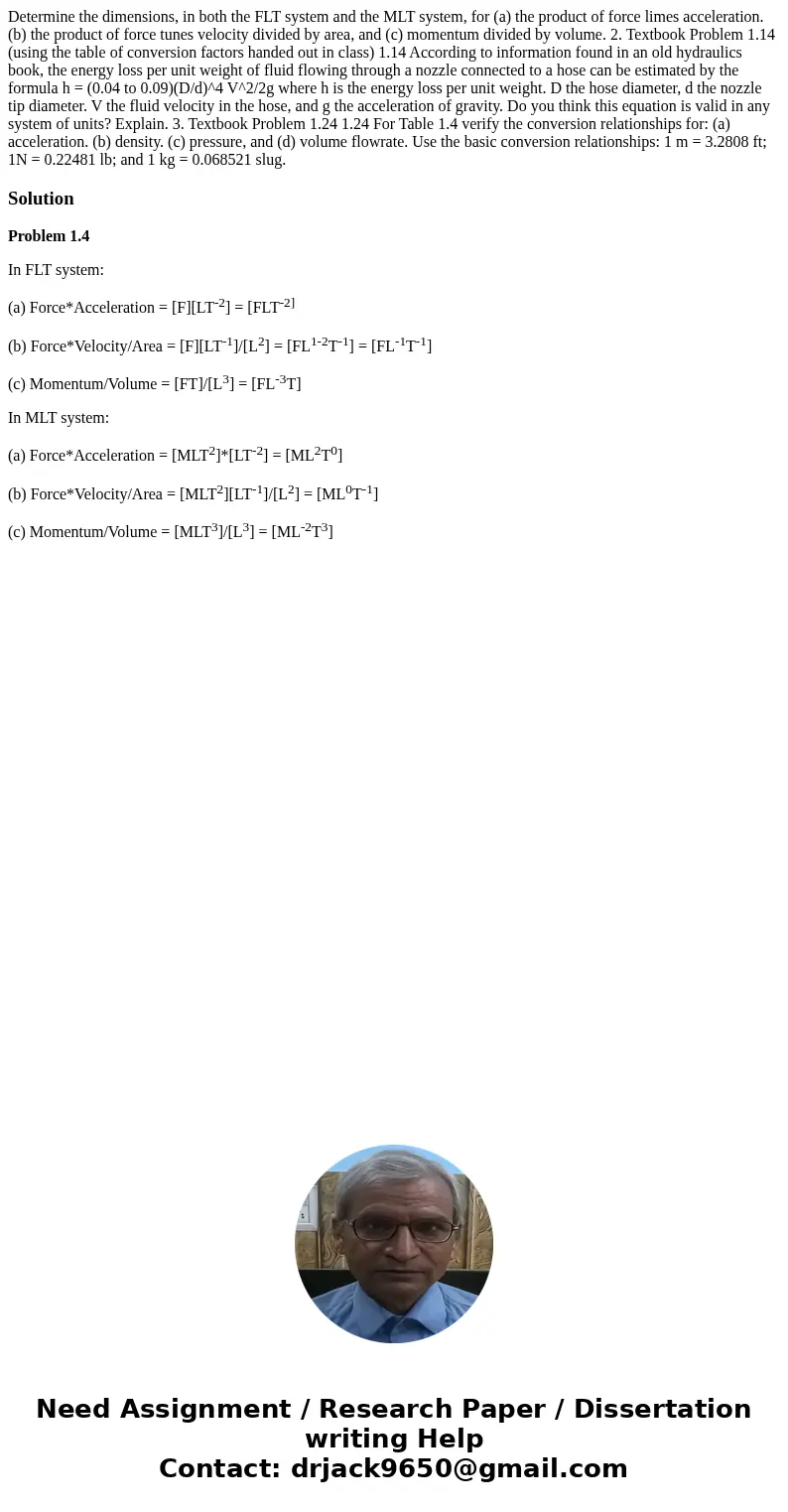Determine the dimensions in both the FLT system and the MLT
Determine the dimensions, in both the FLT system and the MLT system, for (a) the product of force limes acceleration. (b) the product of force tunes velocity divided by area, and (c) momentum divided by volume. 2. Textbook Problem 1.14 (using the table of conversion factors handed out in class) 1.14 According to information found in an old hydraulics book, the energy loss per unit weight of fluid flowing through a nozzle connected to a hose can be estimated by the formula h = (0.04 to 0.09)(D/d)^4 V^2/2g where h is the energy loss per unit weight. D the hose diameter, d the nozzle tip diameter. V the fluid velocity in the hose, and g the acceleration of gravity. Do you think this equation is valid in any system of units? Explain. 3. Textbook Problem 1.24 1.24 For Table 1.4 verify the conversion relationships for: (a) acceleration. (b) density. (c) pressure, and (d) volume flowrate. Use the basic conversion relationships: 1 m = 3.2808 ft; 1N = 0.22481 lb; and 1 kg = 0.068521 slug.
Solution
Problem 1.4
In FLT system:
(a) Force*Acceleration = [F][LT-2] = [FLT-2]
(b) Force*Velocity/Area = [F][LT-1]/[L2] = [FL1-2T-1] = [FL-1T-1]
(c) Momentum/Volume = [FT]/[L3] = [FL-3T]
In MLT system:
(a) Force*Acceleration = [MLT2]*[LT-2] = [ML2T0]
(b) Force*Velocity/Area = [MLT2][LT-1]/[L2] = [ML0T-1]
(c) Momentum/Volume = [MLT3]/[L3] = [ML-2T3]

 Homework Sourse
Homework Sourse